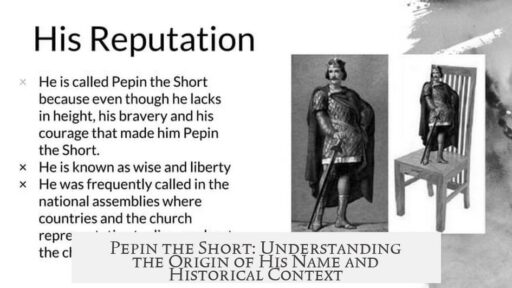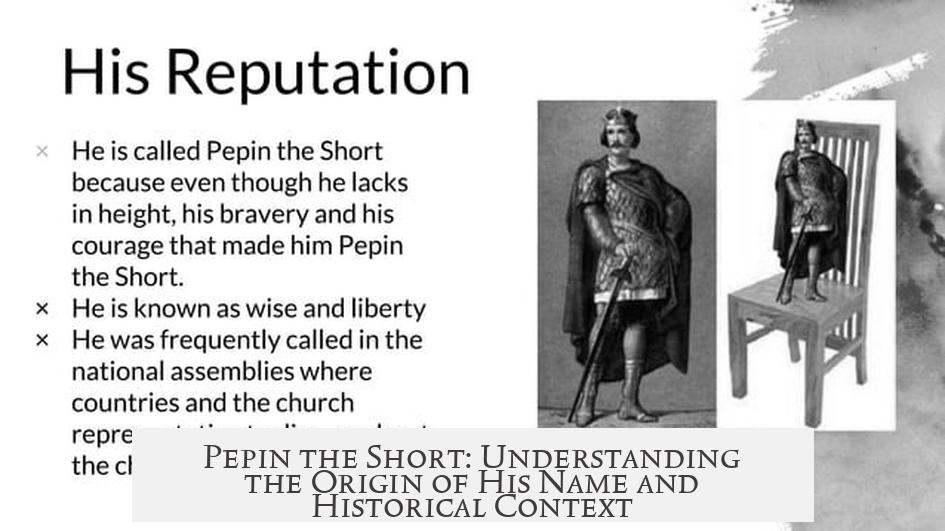Pepin the Short’s nickname “the Short” likely does not mean he was physically short, but rather served to distinguish him from other family members sharing the name Pippin within the Carolingian dynasty.
The first attestation of the nickname “short” (Latin: parvus, meaning “small”) for Pepin appears only in the 11th century, about 300 years after his reign. This suggests the term was a later addition and not a contemporary description. The use emerged in regions such as Flanders, reflecting retrospective labeling rather than eyewitness fact.
Nicknames were needed in the Carolingian family because multiple ancestors bore the name Pippin. Charlemagne’s father, grandfather (Pippin of Herstal), and great-great-great-grandfather (Pippin of Landen) shared this name. Even two of Pepin the Short’s sons were called Pippin. This created confusion that nicknames like “the Short” helped resolve.
It is possible that the term “short” originated from a semantic shift. The adjective minor (“the younger”) might have evolved into parvus through misinterpretation over time. Such linguistic changes were common in medieval texts and could explain why “short” is used without clear physical evidence.
The monk Notker of Saint-Gall, writing in the late 9th century, provides anecdotal tales of Pepin, but his work has limited historical accuracy. One story depicts Pepin fighting and killing a lion to prove his strength, likening him to biblical and classical figures described as small but mighty, such as David and Alexander the Great.
This tale supports the idea that “short” may have reflected a figurative rather than literal meaning—highlighting Pepin’s ability to overcome larger enemies rather than his height. It implied strength despite modest stature.
Another example comes from accounts of Charlemagne’s eldest son, Pippin the Hunchback. While Einhard, Charlemagne’s biographer, describes him as hunchbacked, Notker adds that he was a dwarf (nanus), although this is not well-supported. This shows some medieval tendency to conflate or exaggerate physical traits across family members named Pippin.
There is no contemporary evidence from the 8th or 9th centuries to confirm Pepin the Short was actually short in height. The nickname only appears in much later sources, which likely conflated or confused features of various Pippins. Later writers intended the nickname to mean “small,” but given the time gap, their statements are not reliable historical facts.
In summary, multiple factors likely contributed to Pepin’s nickname:
- The need to differentiate him from other similarly named Carolingian ancestors.
- A probable semantic shift from “younger” to “small.”
- Linguistic conflations of anecdotes about size or strength among Carolingian Pippins.
- The figurative use of “short” to convey relative stature versus enemies rather than literal physical stature.
While it remains possible Pepin was physically shorter than average, the lack of direct evidence from his time means modern historians treat the nickname as a later construct used for identification rather than a precise descriptor.
Key takeaways:
- Pepin the Short’s nickname appeared centuries after his reign, first in the 11th century.
- The Carolingian family contained multiple Pippins, making nicknames necessary for clarity.
- “Short” may result from a linguistic shift or metaphorical use relating to strength or youth.
- Stories from Notker of Saint-Gall highlight anecdotes but are not fully reliable.
- No contemporary sources confirm Pepin’s physical stature as short.
- The nickname served mainly to distinguish Pepin historically, not necessarily to describe his height.



